Abstract
A soil microorganism, identified as Acinetobacter calcoaceticus, was cultivated on ethanol as a sole source of carbon. This organism grew with a maximum specific growth rate of 0.7/h. The pH optimum for growth was between 6.5 and 7.5, and the temperature optimum was between 32 and 35 C. Ethanol metabolism by this organism was inducible by ethanol, and the presence of acetate led to the repression of ethanol dehydrogenase. At higher cell densities the cessation of growth on ethanol was accompanied by the accumulation of acetate or acetaldehyde, or both. These accumulations were attributed to a reduction in the magnesium or sulfur content of the medium and a lack of feedback inhibition by acetate of alcohol dehydrogenase.
Full text
PDF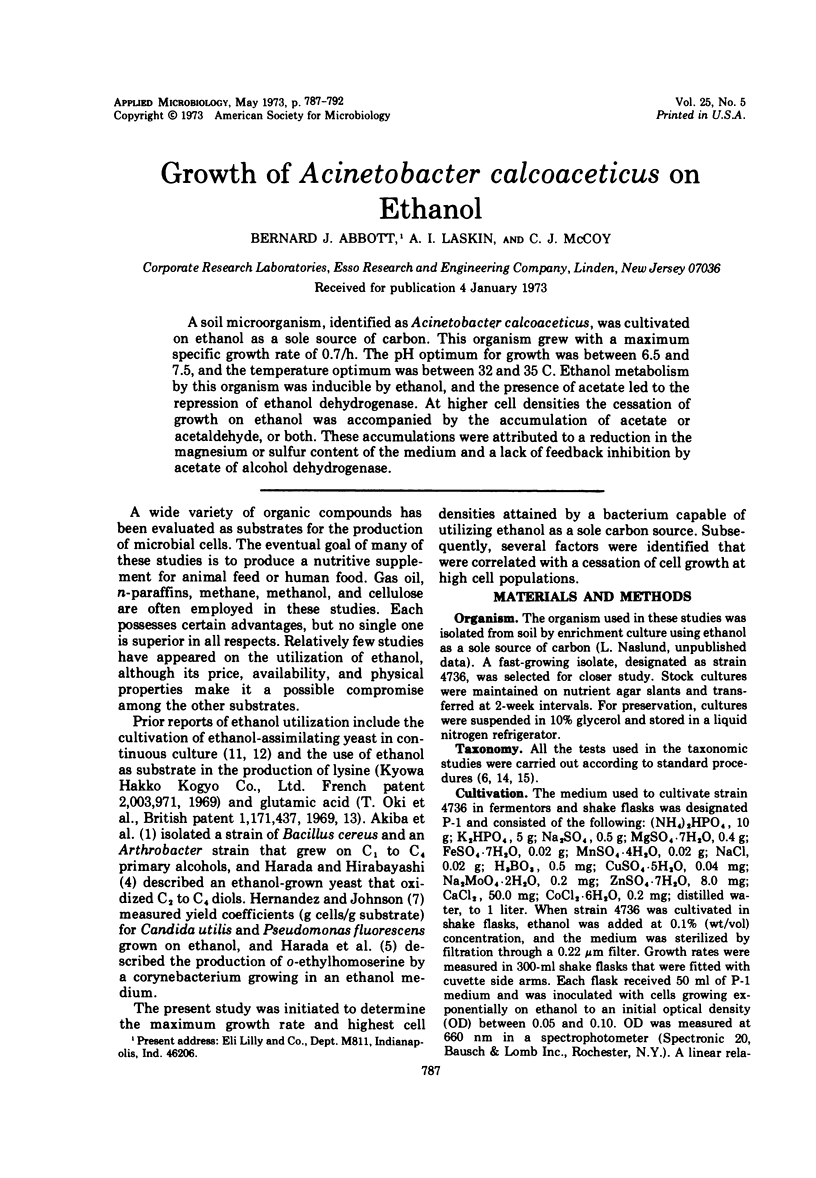
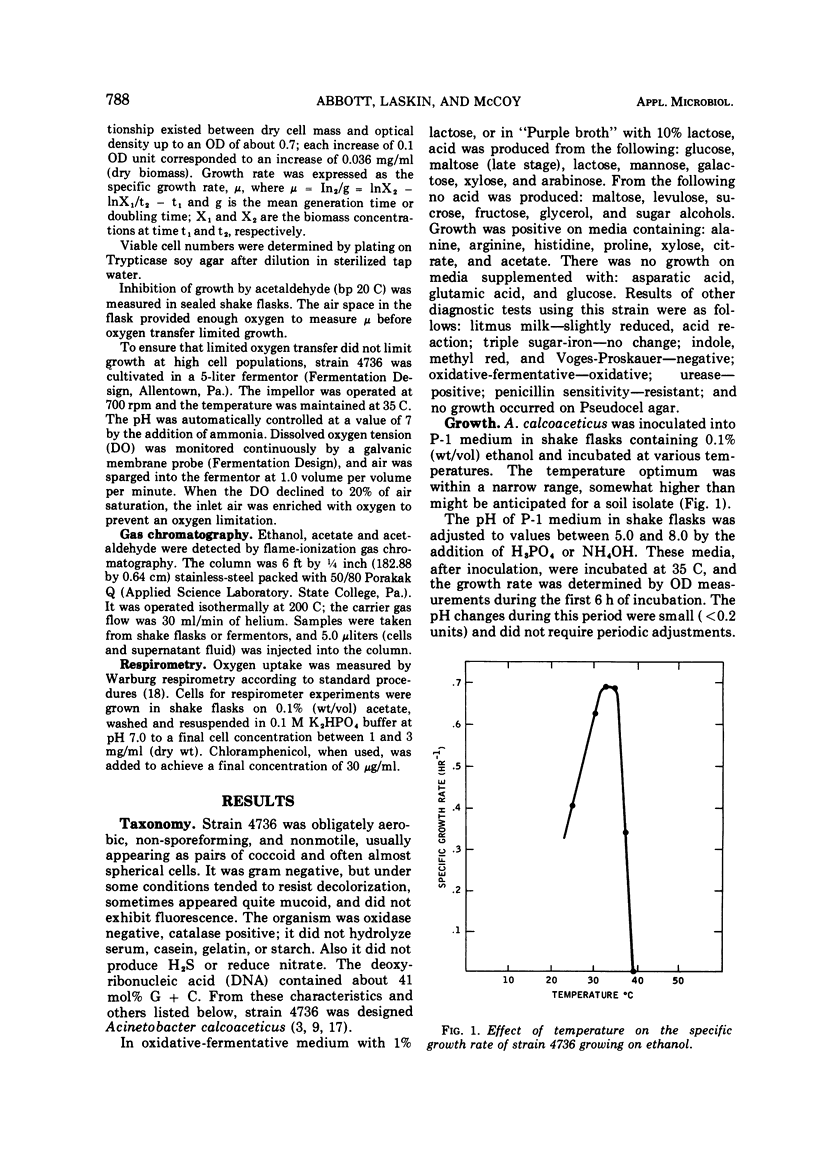
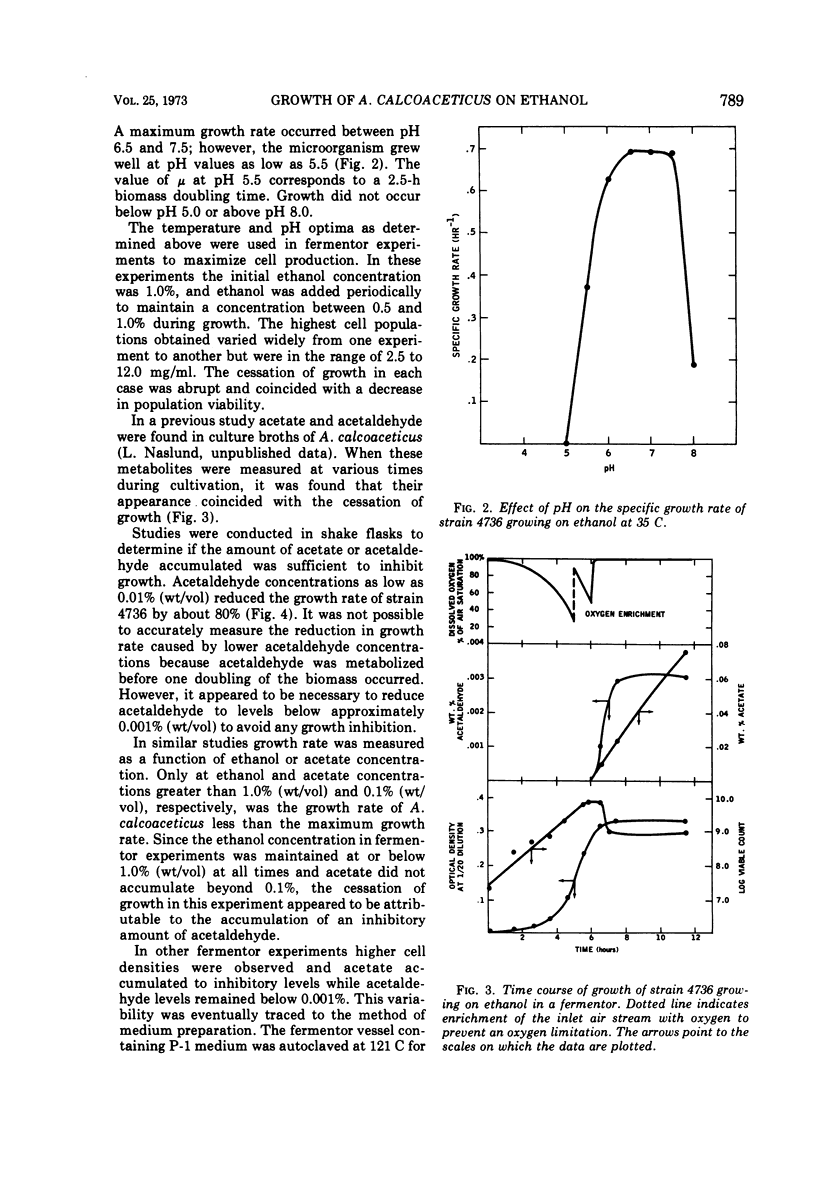
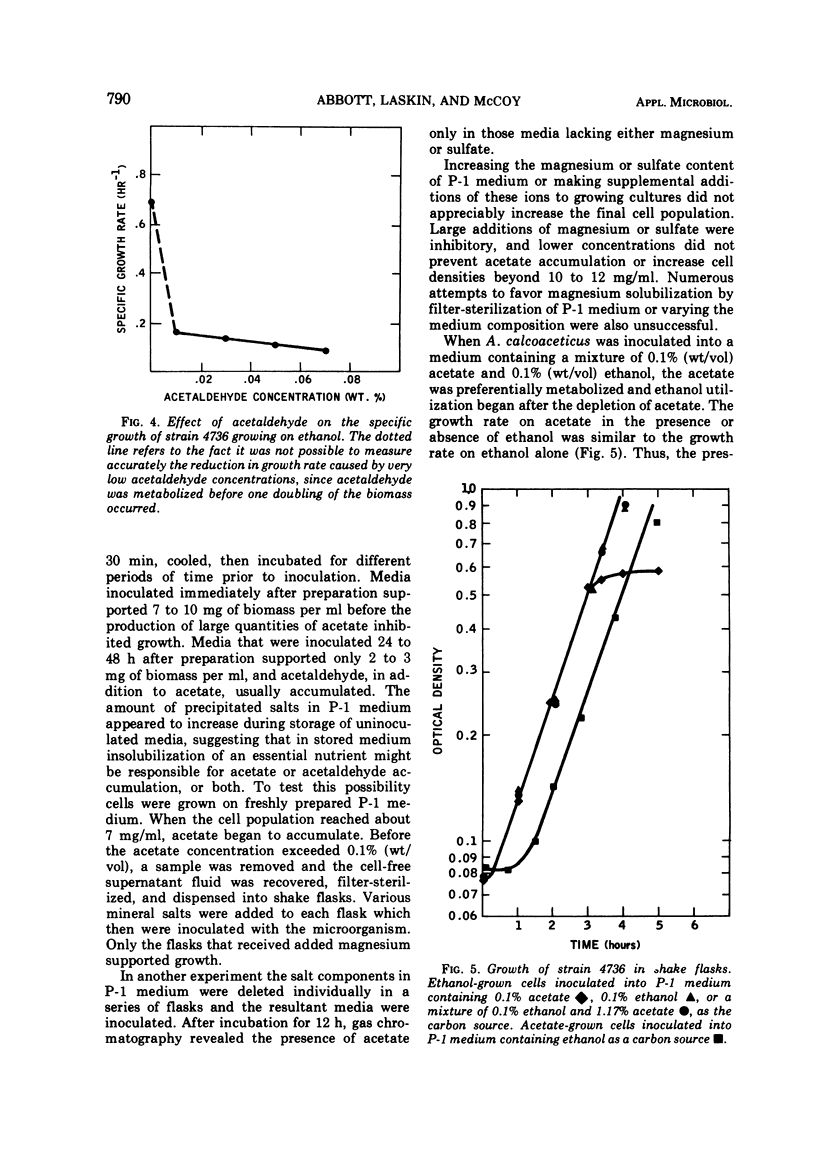
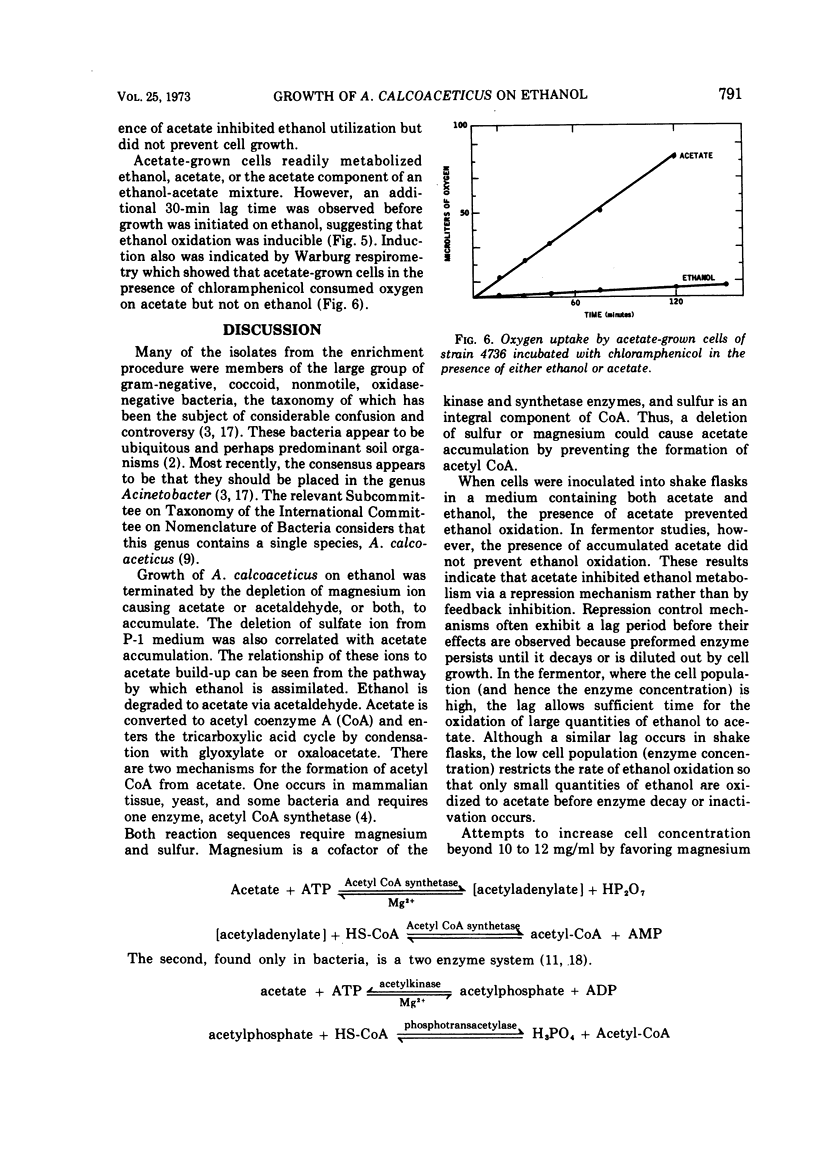
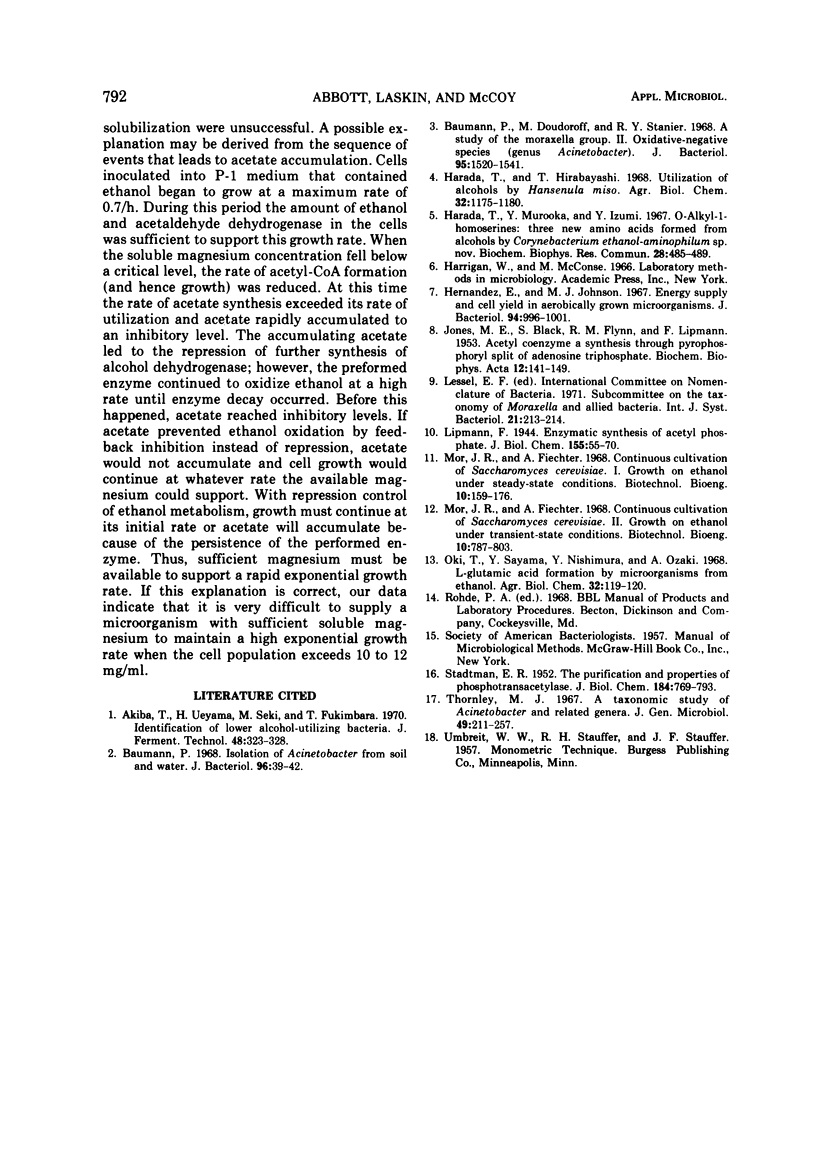
Selected References
These references are in PubMed. This may not be the complete list of references from this article.
- Baumann P., Doudoroff M., Stanier R. Y. A study of the Moraxella group. II. Oxidative-negative species (genus Acinetobacter). J Bacteriol. 1968 May;95(5):1520–1541. doi: 10.1128/jb.95.5.1520-1541.1968. [DOI] [PMC free article] [PubMed] [Google Scholar]
- Baumann P. Isolation of Acinetobacter from soil and water. J Bacteriol. 1968 Jul;96(1):39–42. doi: 10.1128/jb.96.1.39-42.1968. [DOI] [PMC free article] [PubMed] [Google Scholar]
- Harada T., Murooka Y., Izumi Y. O-alkyl-l-homoserines: three new amino acids formed from alcohols by Corynebacterium ethanolaminophilum sp. nov. Biochem Biophys Res Commun. 1967 Aug 23;28(4):485–489. doi: 10.1016/0006-291x(67)90338-5. [DOI] [PubMed] [Google Scholar]
- Hernandez E., Johnson M. J. Energy supply and cell yield in aerobically growth microorganisms. J Bacteriol. 1967 Oct;94(4):996–1001. doi: 10.1128/jb.94.4.996-1001.1967. [DOI] [PMC free article] [PubMed] [Google Scholar]
- JONES M. E., BLACK S., FLYNN R. M., LIPMANN F. Acetyl coenzyme a synthesis through pyrophosphoryl split of adenosine triphosphate. Biochim Biophys Acta. 1953 Sep-Oct;12(1-2):141–149. doi: 10.1016/0006-3002(53)90133-4. [DOI] [PubMed] [Google Scholar]
- STADTMAN E. R., BARKER H. A. Fatty acid synthesis by enzyme preparations of Clostridium kluyveri. VI. Reactions of acyl phosphates. J Biol Chem. 1950 Jun;184(2):769–793. [PubMed] [Google Scholar]
- Thornley M. J. A taxonomic study of Acinetobacter and related genera. J Gen Microbiol. 1967 Nov;49(2):211–257. doi: 10.1099/00221287-49-2-211. [DOI] [PubMed] [Google Scholar]


